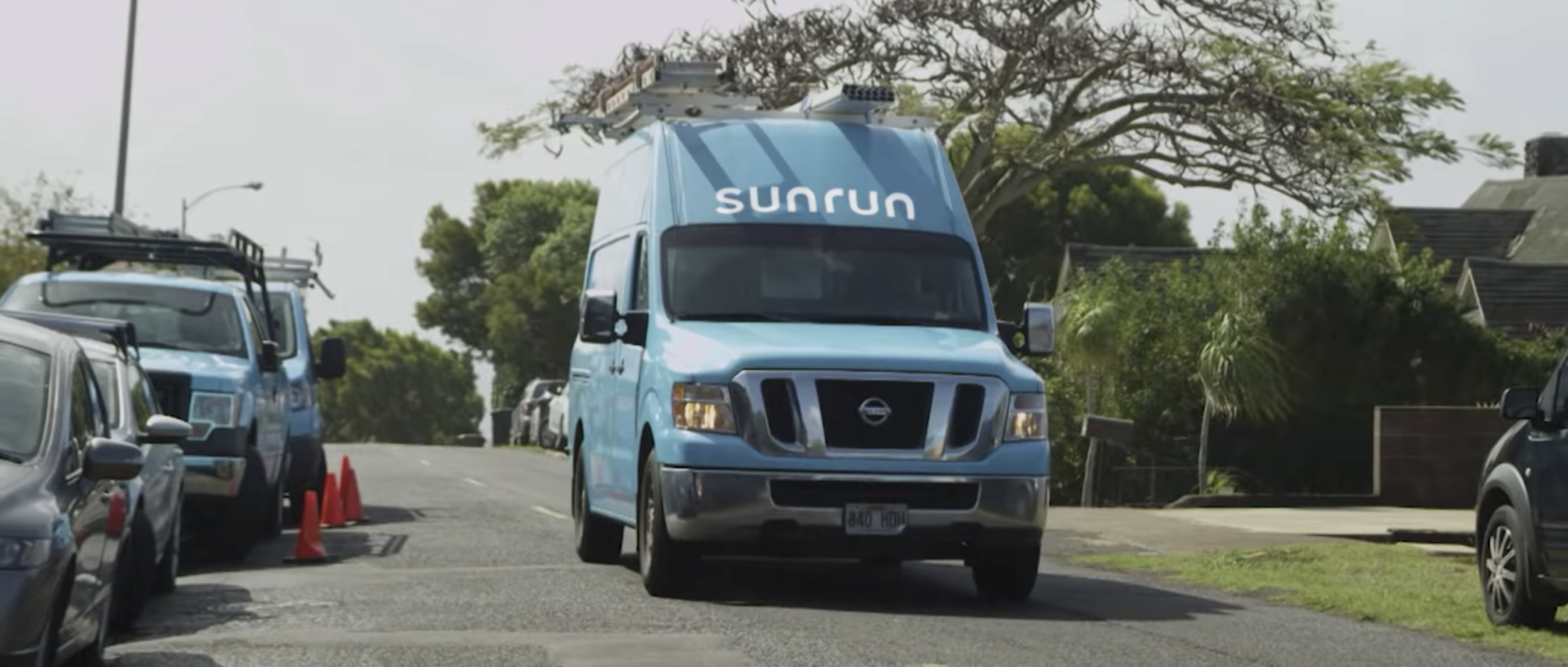How to Support Outside Sales Through Effective Scheduling
An outside sales strategy can offer a business some unique advantages that an inside sales model just can’t promise. But increasing customer demands, a growing competitive landscape, and an inability to properly support field sales reps have threatened the success of many organizations with an outside sales workforce.
It’s critical for businesses to understand the importance of providing the right support to their field sales reps, or they’ll likely risk being left behind. Strong scheduling tools, efficient processes, and workforce visibility can drive operational success, maintain employee satisfaction, and ensure a competitive edge.
Common Outside/Field Sales Challenges
Selling to customers in the field is a great way to bolster client relationships, demonstrate complex products, and nurture high-value prospects, but it certainly doesn’t come without its challenges.
For already-busy sales reps, traveling to meet with customers face-to-face can lead to:
- Poor time management – Outside sales reps have a lot on their plates—from researching prospects, to traveling, to administrative tasks, to account management, to planning, to connecting with customers, and more. Because they’re so inundated with activities, they only spend just over a third of their time (35.2%) actually selling. The fragmented tools they use to support all of these daily activities tend to exacerbate the problem, as toggling between apps is both time-consuming and frustrating.
The business as a whole suffers, too, from reps’ inability to properly manage their time, since the majority of the day is spent on non-revenue generating tasks. Simply put, reps can’t maximize their time and productivity if they don’t have the proper tools to empower them.
- Repetitive tasks – Sales reps are skilled individuals who are highly valuable to their organizations. But if they still rely on manual, inefficient processes to execute their work, their productivity and satisfaction are likely suffering. Outdated methods require reps to manually enter hours, customer information, and job completion details into a system (like a CRM) when they return to the office. This wastes precious time that could be spent on the more complex work that improves your bottom line.
- Lack of structured time – A major obstacle for many field sales reps is the fact that they must manage their own daily schedules and work independently. This often proves difficult, as appointments out in the field can change at the drop of the hat and throw a wrench in reps’ ability to maximize their time. Outside sales reps also rely heavily on their scheduling departments to efficiently plan their day, so if they don’t have the right tools to receive real-time updates from schedulers, they risk wasting time traveling to cancelled appointments.
And reps aren’t the only ones who must overcome the hurdles of an outside sales workforce. Field service supervisors, schedulers, and leadership often struggle with:
- Real-time communication – It’s imperative for managers and staff schedulers to have reliable, instant communication with reps in the field. But this is tricky when teams use multiple, disparate tools (e.g. email, text messages, phone calls) to communicate. The lack of connectedness leads to essential updates and information falling through the cracks, which can impact customer satisfaction, employee engagement, and, ultimately, revenue.
- Real-time schedule changes and updates – The reality of outside sales is that things in the field are constantly changing. Customers frequently cancel, reschedule, and book last-minute appointments, which can easily throw a wrench in reps’ daily plans. When supervisors and schedulers don’t have a single, reliable tool to automatically update reps of any changes, they’re forced to take on the burden of manual reach-out. So when one field sales rep calls in sick or a customer cancels when the rep is already on their way, it sets off a domino effect that can impact the rest of the day.
- Lack of understanding the time required for tasks – Without the right scheduling solution, it’s difficult for leadership to understand how much time is required for any given task. They can’t accurately allocate time and resources if they’re only estimating how long something will take to complete. The result is either underutilized reps, or overworked employees who are at risk for burnout.
- Accountability regarding completed tasks – Unlike their inside sales counterparts, field sales reps often have difficulty demonstrating their day-to-day performance. Managers can’t exactly see firsthand what their reps have completed, how long it took them, and whether or not they were properly prepared. These details are easily lost or skewed if they’re not captured in real time in the field, which means they aren’t accurate enough for leaders to rely on for understanding and improving rep accountability.
- Visibility into reps’ activities – Supervisors and schedulers both need specific context around what’s going on in reps’ days so they can make informed decisions. But many don’t have the tools they need to access the necessary information (e.g. time spent on a job, arrival time, daily idle time, etc.) to do so. This makes it challenging to plan ahead, understand rep performance, and make any potential improvements in schedules and processes.
Traditional field service management mitigates some of these challenges, but that’s often not enough to ensure the visibility needed to increase efficiency, productivity, and, ultimately, customer satisfaction. By implementing a modern solution and optimizing your processes, you can better address these issues to decrease burnout, improve transparency, and drive better business insights.
6 Tips To Create Effective Outside Sales Scheduling
Providing proper support to your field sales teams doesn’t have to be a headache. Once you understand the importance of implementing a strategic process that takes into account more than availability—and emphasizes the employee experience—you can create effective schedules that better support your field sales reps.
Here are our best tips for getting started:
1. Leverage Scheduling Technology for Efficient Scheduling
A manual scheduling process is time-consuming, costly, and frustrating for both field reps and staff schedulers. By implementing robust, automated scheduling software, you gain increased visibility into schedules and job details (for field workers and employers), streamlined processes and operations, and improved communications between your mobile workers and the back office.
As you evaluate scheduling tools, make sure the one you choose offers functionalities for centralized communication, intelligent job matching, data collection and analysis, and integration with your existing systems (e.g. CRM, payroll, HR system, etc.). That way, all of your employees’ daily activities can revolve around a single system, which saves time, streamlines operations, and collects everything they need in one place.
2. Identify and Prioritize Resource Needs
In order to deliver excellent service at each customer interaction, you first need to determine the location, appointment length, and skill set required for each job. For example, you’ll need to consider different factors for scheduling field sales reps who sell primarily at big-box retail locations than for those who rely on door-to-door sales routes. Leadership and schedulers should first hammer down details like how many hours each rep will work, where they’ll work, and whether or not they’ll need a particular skill set to succeed.
Instead of managing this information in disparate tools or spreadsheets, modern sales organizations invest in intelligent software that gathers data for future planning and tracks outside sales reps’ time spent on the job. This helps them identify trends in resource needs and availability before they finalize schedules, and can save time they’d otherwise spend re-working schedules and communicating changes.
3. Schedule Shifts Around Priorities and Qualifications
It’s crucial to match the right field sales rep with the right customer—based on location, relationship history, preference, skill set, and more—to ensure a great experience. But this is difficult to juggle if schedulers don’t have tools that track these details and automatically align them with corresponding jobs.
Competitive sales organizations use tools that take into account all of these factors (plus employee performance, seniority, and pay rates) to instantly pair field reps to the right job every time. What’s more, some tools automatically update over time, so as these details change, schedulers don’t have to waste time manually tweaking schedules. The result is well-prepared, satisfied employees who are ready to delight their customers and close the deal.
4. Use Tools For Real-Time Communication
When your sales reps are in the field, communication can be complicated. They’re busy traveling to their appointments, and likely don’t have time to shuffle between multiple platforms to check for potential updates. It’s frustrating and can negatively impact both employee experience and overall business outcomes.
Instead, make sure you arm your outside sales teams with a single, streamlined tool that they can use to access up-to-date scheduling information and communicate with back office workers, other field reps, and customers. They should be able to instantly check for customer details, cancellations, delays, and more in one, mobile-friendly place. Even better if the tool you choose can also update customers with arrival times, appointment changes, and more, so they’re always confident that your team is on top of things.
5. Plan for the Unexpected
A strategic, proactive scheduling process sets you apart from less-prepared, reactive competitors. It’s important to remember that your outside sales reps are human, so your scheduling process should be flexible enough to support the dynamic nature of your workforce. And when you’re ready to tackle last-minute, unforeseen changes, you can more easily avoid the no-shows and cancellations that decrease customer satisfaction.
By using the right technology, you can automatically identify and resolve exceptions without burdening your staff schedulers or failing to meet customer expectations. Both your outside reps and back-office workers can rest easy knowing that your process can handle the unexpected.
6. Iterate and Adjust Your Schedules
Just because you’ve implemented technology to help improve your scheduling process doesn’t mean you should hang up your hat and rest on your laurels. It’s crucial that you use what you’re continuously learning about your outside sales workforce to make adjustments moving forward, too. That way, you can keep increasing efficiency and making strategic decisions that improve your bottom line.
Use your data to identify trends—like irregularly large gaps between appointments or consistently late arrivals—that could be resolved through scheduling adjustments. You might need to assign more customers to an underutilized rep or take some work off the plate of someone who’s already stretched too thin.
When you track and analyze these trends over a larger period of time, you can start to better understand your workforce, resources, and business needs so schedulers can plan ahead more accurately and consistently. It helps if you have a tool that automatically collects and analyzes data for you, giving you better workforce visibility into availability, customer demand, and overall satisfaction.
Bringing Visibility Into Scheduling
Organizations with a field sales component need tools that are specifically built to increase visibility and operational efficiency. That’s why Sunrun, a leading US-based provider of retail solar electricity, sought to find a solution that could help them better manage and scale their sales operations.
Sunrun schedules hundreds of solar advisors in a variety of big-box retail locations in an effort to educate customers on the benefits of solar energy. They help customers to identify their energy needs, determine if they qualify for solar installation, and set up in-home appointments with solar experts.
But that business model is difficult to manage, as it requires ad hoc scheduling on a massive scale. Sunrun’s scheduling supervisors were using manual scheduling methods (like Excel, Google sheets, and email) to coordinate appointments with customers, but this process just didn’t provide the visibility they needed to succeed. They found difficulties in tracking which stores they needed to staff each day, who was supposed to be there, and whether or not that rep was actually available.
Sunrun decided to partner with Skedulo to better support their deskless workers. Skedulo’s robust software was easily integrated with their Salesforce CRM and offered automated, scalable dispatching as the company grew.
Backed by Skedulo’s mobile workforce management solution, Sunrun increased visibility into daily operations, streamlined scheduling, and gained insights for better business decisions. Now, Sunrun is able to expand their organization and get their field sales reps in front of more customers at more locations—without burdening their staff schedulers with manual, time-consuming tasks.
Empower Your Field Sales Workforce
Supporting a strong deskless workforce means empowering both field sales reps and staff schedulers with everything they need to work efficiently. With the right tools, your organization can improve workforce visibility, streamline scheduling, and eliminate cumbersome manual processes—all of which increase customer satisfaction to boost your bottom line.
Skedulo offers modern mobile workforce management software, with tools for intelligent job matching, dispatching, scheduling, route optimization and more.
Learn how your field sales workforce can benefit from the right solution, or book a demo today.





